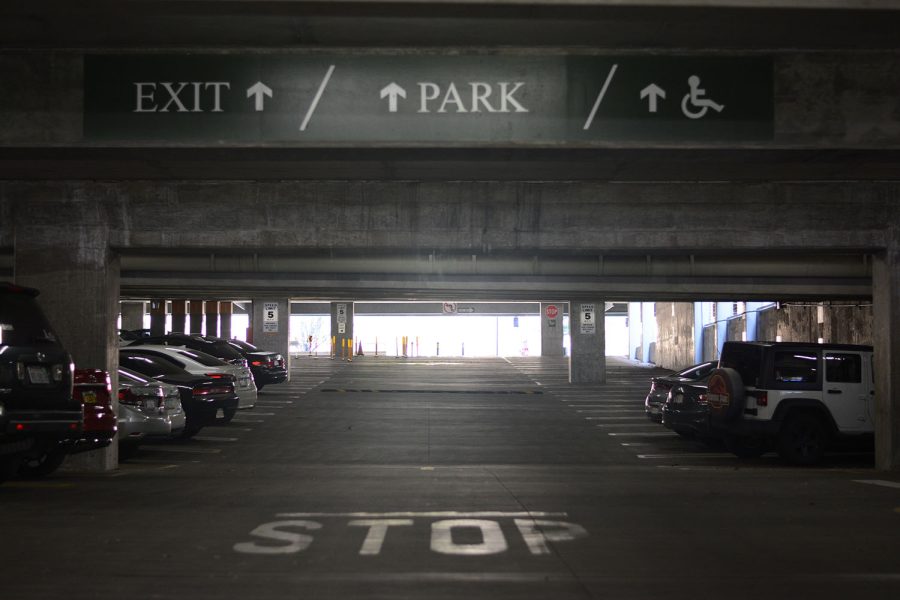OPINION: Parking structure cost for students
Sundial File Photo: CSUN’s B3 parking structure.
May 16, 2022
My school day mornings are the same routine day in and day out. I wake up as the sun peaks over Rose Hills in Pico Rivera. After my typical routine of showering, getting dressed and eating, my trip to the San Fernando Valley starts. As I sit in my car, waiting to warm up, I choose my best option to get to CSUN. Most days take me on the 101 highway. After thirty minutes of bumper-to-bumper traffic in downtown Los Angeles, my drive eases as I pass the Hollywood sign. After my hour-long drive to campus, when I think I am in the clear, my battle for parking begins.
My anger with parking at CSUN goes back to 2017, after spending hundreds of dollars on a parking pass in my freshman year. On top of tuition costs and books, I knew CSUN would be draining my pocketbook for the next few years.
Parking prices are ridiculously high. In fact, in the last decade we saw an increase in parking prices at CSUN. In 2016, students saw an increase in both daily and semester parking passes. The price jumped $9 for semester passes and $2 for daily passes.
This might seem like a miniscule amount of money for a single daily pass, but for each 100,000 cars that park and buy a daily pass at $8, the school makes $200,000 more than it would when the prices were $6.
Students would lose hundreds of dollars after numerous trips to CSUN throughout the year, which could have been used for other expenses.
In an email on the Parking and Transportation Services’ homepage that circulated in 2016 about the increase, Colin Donahue, vice president of administration and finance, explained that some of the money would be used for the new G6 parking structure at Plummer Street and Zelzah Avenue. A good idea at the time, due to the lack of available spaces on campus, ultimately feels like wasted money — $30 million to be exact.
The lot sat nearly empty throughout the semester. On Thursday, April 28, at 12:40 p.m., through a personal account, there were more than 1500 parking spaces left in the parking structure. Floors 2-5 each had over 300 spaces available.
The reasoning as to why CSUN spent $30 million on a parking structure that had numerous floors empty has not been justified. One reason why the lot seems to be empty could be attributed to the ease back onto campus after lifted COVID-19 restrictions in California and Los Angeles County.
CSUN needs to help students ease the already costly tuition for the school year. The average cost for tuition for the spring 2022 semester was $3,519. This doesn’t account for the gas spent to get to campus, the food expenses throughout the semester and the personal expenses of students. The parking passes, which cost between $213 and $426 a year, should not be a worry for students.
CSUN should look to Bakersfield College for how to treat its students in regard to parking. In December 2021, Bakersfield College announced that parking fees would be waived for the 2022 spring semester. They will also waive parking fees for summer classes.
This should be the approach CSUN takes for their students, especially since many students are recovering from the hardships brought upon by the pandemic.
Since CSUN seems to want to go greener with the addition of more electric parking spaces, CSUN should try to focus on getting as few cars on campus as possible.
One solution to get as few cars on campus as possible is expanding the shuttle system that picks up students from the F10 parking lot and campus housing. CSUN should strategize ways to expand shuttle services that would service nearby neighborhoods in the San Fernando Valley. This would drastically alleviate the amount of cars on campus and be more environmentally friendly.
CSUN should find more ways to help students get to campus and ease the financial burden accumulated throughout the semester. It seems like the campus focuses more on squeezing as much money out of its students rather than helping them.
Hopefully in the near future, the school prioritizes students over profits and misused spending.
